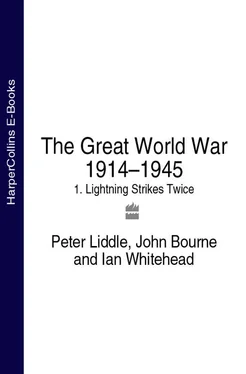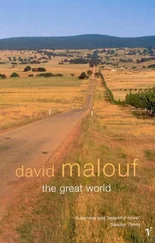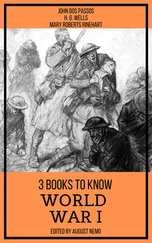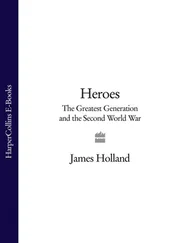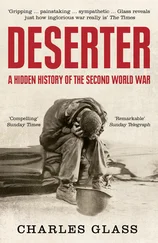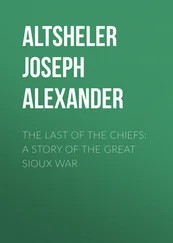1 ...8 9 10 12 13 14 ...18 The pressure on accommodation in the barracks was such that every available space was utilised. Bob Baxter 9, a clerk, reported to Hamilton in January 1940 as a conscript, having had no previous experience of army life:
‘We were billeted in the stables, and we all slept on the concrete floor on palliasses, hessian bags stuffed with straw. While the horses had been moved, the rats which often are their bedfellows remained. We had to accept at night they would crawl over our bedding, and sometimes over our faces. I had been an office clerk before call-up, and the primitive conditions were quite a shock for many of us whose life previously had been comparatively sheltered, even though we knew what to expect. We were taught the use of the Bren Gun on a wooden model. Being new to military life, we tended to accept everything we were told by the regulars as “gospel”. It was only after a few weeks service that we began to realise that some of the very junior NCOs, old sweats who had received instant promotion after the rapid expansion of the forces, perhaps were not the ideal instructors. Even the over-officious Acting Unpaid Lance-Corporal was obeyed without question, as we soon learned that rank was all-important. I joined the Motor Transport Section. This consisted of a variety of military vehicles supplemented by an assortment of commandeered civilian cars, vans and lorries. Nevertheless, the usual moans of the private soldier apart, it was a sound introduction to military discipline and army life but nothing else.’
Rifleman W. W. Gallacher 10, a 1940 conscript, was astounded at the crudeness of some of the Regulars and reservists: ‘…they even used to spit in their tea to make sure no one would drink it while they queued for the next course, probably a legacy of service abroad in stations where water was in short supply.’
Thomas Laing 11was a shop assistant in Edinburgh when conscripted in 1939. When asked on enlistment if he had any preference for a particular arm of the service, he explained that he was a musician and interested in organising entertainments. The response was immediate: ‘…it’s the infantry for you!’ He was posted to a training unit of the Cameronians in a hutted camp at East Kilbride, having had no previous military experience:
‘We were all conscripts, and not allowed out of camp for the first three weeks, until we had acquired a semblance of soldierly appearance. Apart from the few malcontents which could be found in any branch of the forces, all of us realised we were there “for the duration”, so there was nothing for it but to make the best of it. Having had to wait some time between enlistment and call-up gave us some time to prepare mentally for the abrupt change in our circumstances. I was able to escape the dreaded Church Parade by being detailed as an organist, and also to organise entertainments for the unit. I cannot recall that there were any complaints about the standard of catering, but some of our billets were pretty primitive to say the least, but we all mucked in and an excellent team spirit developed. While we were prepared to accept orders from our own officers, there was always objection taken to anyone not of our Regiment trying to tell us what to do. We had a strong sense of being part of the Scottish military tradition – I think even the Englishmen who joined us felt this, and adopted the same unwillingness to be messed about, especially by anyone we didn’t respect.’
This was not always the case. The policy adopted in 1916 during the First World War of restricting the number of conscript postings to local regiments was continued – in order to avoid a particular area being severely affected in the event of that unit suffering heavy casualties. It was not a universal success. A Rifleman 12, who wishes to remain anonymous, joined at Hamilton in early 1940 to be squadded with several thoroughly disaffected East Londoners bemused by their alien surroundings, and intent only on returning to London and their former way of life in the criminal society of the city’s East End:
‘On our first leave, the Barracks shut down all training, and a special train was laid on to Glasgow to catch onward connections. The train had barely left the station when the Londoners changed into civilian clothes, threw their uniforms out of the window and produced false identification cards. I never saw them again…’
Unlike 1914 there was no immediate award of commissioned rank to men thought to be of the right social standing and background. Initially officers were selected mainly from the ranks of the existing Territorial battalions of the Army. However, in the Officer Cadet Training Corps a requirement of membership was the giving of an undertaking in the event of war to join HM Forces and go forward to commissioned rank. The potentiality of immediate commissioning occurred in September 1939 to David Liddell 13, a private in the only infantry battalion of The Honourable Artillery Company, a prestigious London Territorial regiment. He was a junior broker with Lloyd’s, joining his battalion when it was mobilised. The HAC, in effect, was an Officer Cadet Unit, and membership then virtually guaranteed an offer of a commission after mobilisation, the timing of the offer being dependent on length of service as a Territorial.
After a two-month crash course at Bulford in December 1939, I was awarded a commission. I was required to express a preference for a regimental posting. A friend of the family, Major Storey, MC, a Cameronian of many years standing whom I greatly respected, had urged me to apply to his regiment, and although I had no previous connection with it, I was delighted when accepted – so much so, that I was able to persuade three other friends, newly commissioned from HAC, to do so, and we all arrived at Hamilton Barracks at the turn of the year.’
The need to produce cadres of competent junior NCOs was quickly grasped.
‘Training of new recruits was a priority. Soon after my arrival, still as a 2nd Lieutenant, I was given command of a platoon created to train potential NCOs. At the conclusion of each course, my duty was to submit a report to Battalion HQ on the potential of each man. The quality of the Riflemen selected was uniformly high, and many of them joined the 12th Battalion, which was in the course of being made up to strength. I was privileged to be posted to that unit later in 1940, and was pleased to find that those men who had undergone this training were making their mark already as junior NCOs.’
Malcolm McNeil 14, formerly a member of Glasgow University OTC, who joined the Cameronians as a rifleman direct from taking a law degree, said of the four-month course that was to become the norm for Infantry OCTUs throughout the war:
‘The standard of education set and the efficiency of instruction were pretty so-so. I don’t think I learned anything more than I had done at OTC, but the difference was the 24-hour seven-day-a-week exercise and practice, and making soldiering a way of life… The proper training of the Home Forces only began seriously in 1942, when the influence of Alexander, Montgomery, and the GOC Home Forces began to apply to intelligent training – the setting up of Battle Schools, and the concentration on technical skills. Until then we were at sixes and sevens, and from what I saw of it, the 51st (Highland) Division was as poorly trained as we of the 52nd (Lowland) Division when they were sent out to Africa – where they had to learn pretty PDQ…’
Edward Scott 15, a Cheshire man with no Cameronian connections, had this to record:
‘On the outbreak of war in September 1939 I volunteered for service in the army and was formally enlisted. I had undertaken to enlist as a member of the Officer Cadet Reserve, which I had joined on leaving the School OTC with Certificate “A”. I was aware on enlistment that I would have to serve some six months in the ranks before being considered for a commission…’
Читать дальше
